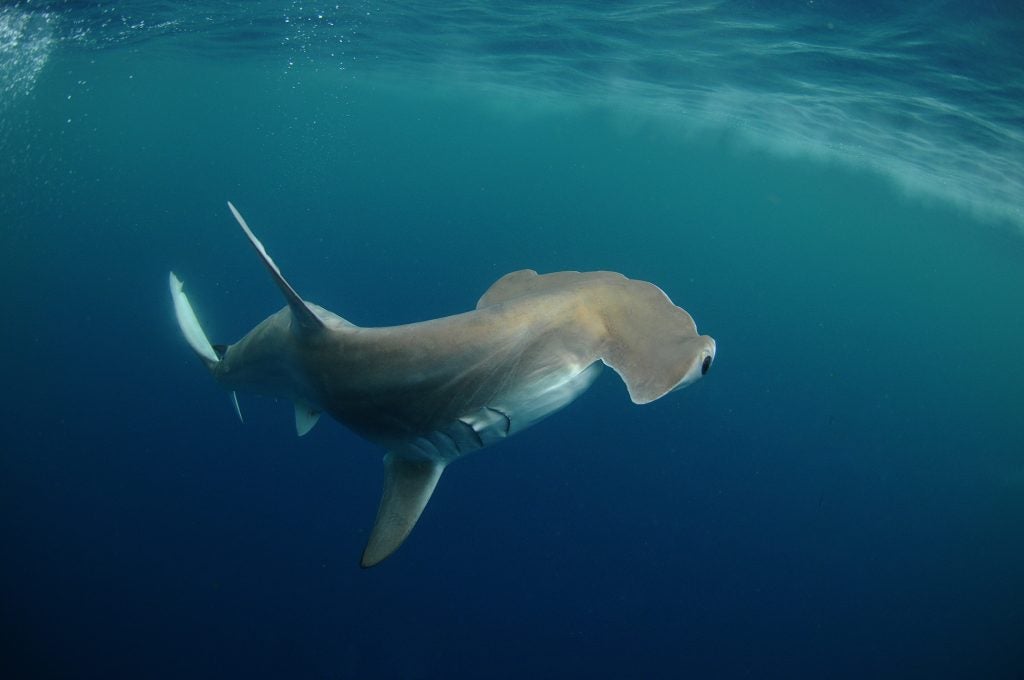By Katie Westfall and Kristin Kleisner
Tunas, sharks, billfishes and swordfish are wide-ranging species that can respond rapidly to environmental changes. Many within this group are top predators and can move across ocean basins and between shallow and deep waters in response to oceanic conditions. For these reasons, some of these species may serve as “climate sentinels,” or animals that can offer important insights into how a changing climate is affecting ocean processes and marine life. However, many of these species face a multitude of threats, including unsustainable levels of fishing and climate change, leading us to wonder what the future holds for the bigger fishes in the sea.
To help shed light on this important topic, EDF and collaborators produced the first comprehensive synthesis of climate change impacts to key highly migratory pelagic species in the Northwest Atlantic Ocean and Gulf of Mexico, informed by more than 160 scientific studies. The report titled “Navigating Our Changing Oceans: An Assessment of Climate Change Impacts to Highly Migratory Species in the North Atlantic Ocean” explores the regional effects of climate change on dozens of species.
We found that the consequences of climate change for these species depend on many factors. While there were common trends like some stocks shifting poleward as waters warm, responses to climate change largely depend on the species, its life stage and the region. Various species will be affected in significantly different ways, and there is still uncertainty about how many of these changes will play out.
Climate change is likely to make survival more difficult for many large pelagic sharks, even after being released alive from fishing gear. Warmer waters are less rich in oxygen, and large pelagic sharks are particularly sensitive to low oxygen levels because of their high metabolic rates. In some coastal and marine regions around the globe, oxygen-rich layers will become shallower, driving some species of sharks closer to the surface where they will become more vulnerable to fishing gear. Certain populations will also lose important habitat that serves as nursery grounds for young sharks to eat and grow.
The current situation is especially dire for many shark species, with large oceanic sharks (and rays) seeing a global decline of 71% in their abundance over the last half century and resulting in increasing extinction risks for almost all species. This decline is primarily due to excessive fishing pressure, often when sharks are caught as bycatch (or unintentionally when targeting other species). Bycatch is one of the greatest threats to shark populations, and climate change will likely amplify this threat to species survival in many ways.
So, what can we do to protect the larger fishes in the sea? Although more research is needed to unravel the complex, interconnected ways in which climate change affects the ocean and its top predators, it’s clear from preliminary studies that highly migratory species need new, advanced strategies for their protection — and they need them fast. While some efforts are underway, accelerated action in five key areas is urgently needed:
- Strengthen international cooperation and management. Due to their highly migratory nature and ability to cross political boundaries, the successful management for many species relies on international coordination. Strong U.S. leadership that prioritizes science-based, precautionary approaches and builds transboundary coalitions to advance and ensure compliance with these strategies is critical in this context.
- Implement effective harvest strategies for target species and set limits for bycatch species. A critical step for building climate resilience is getting foundational fisheries management right, including establishing harvest strategies and controlling bycatch of imperiled and protected species. For stocks undergoing targeted fishing, harvest control rules that are precautionary and responsive will be critical for managing fishing levels. Vulnerable shark species caught as bycatch need stronger protections, including strict limits to incentivize bycatch avoidance and accountability measures in fisheries that interact with them.
- Improve our scientific understanding of highly migratory species and climate impacts. Investments in science will be critical for conserving these species effectively in the face of climate-related uncertainties. Improved data collection in domestic and international fisheries and more intensive monitoring of changes in stocks, ecosystems and the marine environment are needed to inform adaptive approaches. A better understanding of the complex relationships between species (including predator-prey dynamics) and oceanographic changes can aid in scenario planning, the creation of early warning systems, and the development of climate-resilient management approaches.
- Shift to more adaptive, forward-looking forms of management domestically. In the face of changing ocean conditions, we will need more adaptive and dynamic measures that incentivize conservation and ingenuity. Advanced electronic technologies can enable the real-time collection and sharing of data to help fishermen locate optimal fishing grounds and avoid areas where they are likely to encounter bycatch. Additionally, monitoring sentinel species can help guide ecosystem-based management and conservation efforts.
- Co-develop climate resilience solutions with fishing communities. Building socioeconomic resilience will be critical for fishermen, fishing and seafood businesses and coastal communities. Fishing communities are no strangers to the need to adapt to change — whether it’s to aid in the protection of an overfished species or to adjust to market shifts. Developing climate resilience solutions collaboratively with impacted communities, especially with frontline and historically marginalized groups, better ensures they are workable and contribute to fair and equitable outcomes.
Conservation of highly migratory species is a key global challenge that the international community must work together to solve. Recognizing the critical roles these animals play in the ecosystem and potentially as ocean climate sentinels is paramount. In the United States, collaboration between managers, fishermen, scientists and conservation groups can lead to pioneering management approaches and fishing practices to effectively reduce bycatch. By leading through example and being a strong conservation voice in the international arena, we can create successful models and momentum toward long-term sustainability and resilience for fish stocks, the marine environment and fishing communities.










